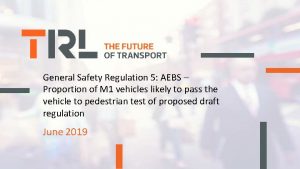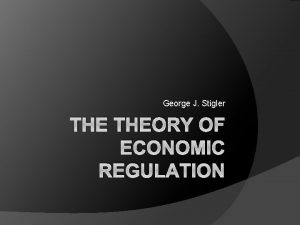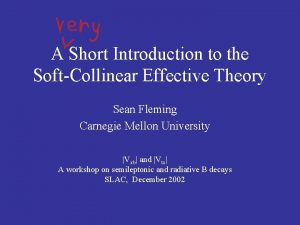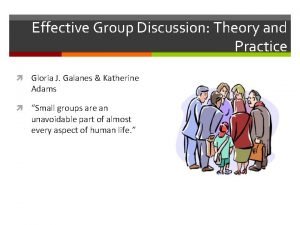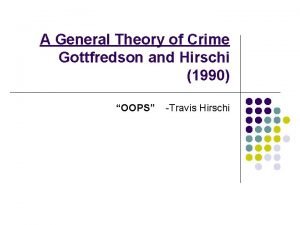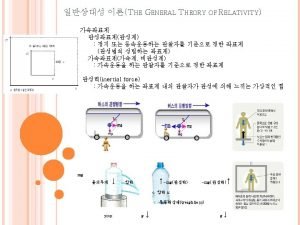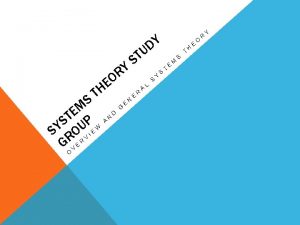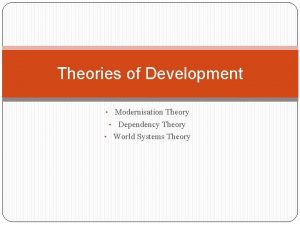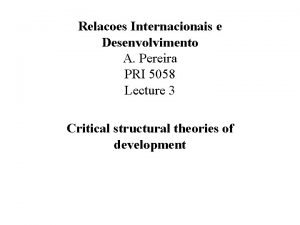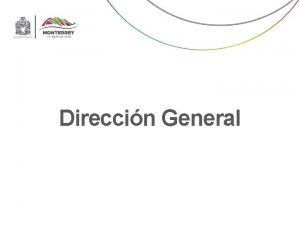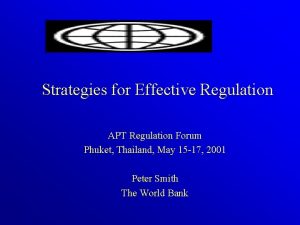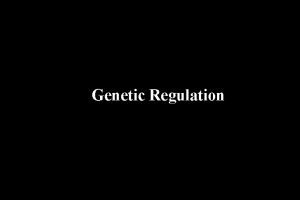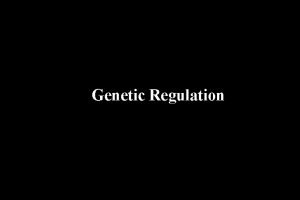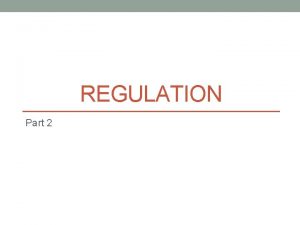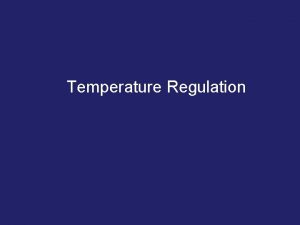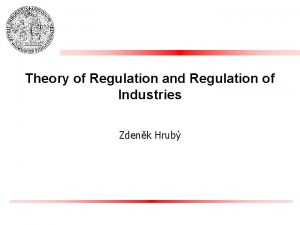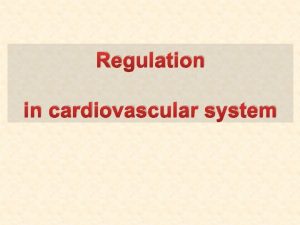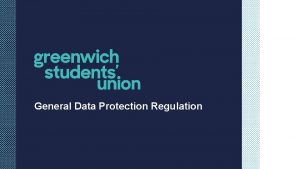Effective Regulation A General Theory of Regulation Dr




















- Slides: 20

Effective Regulation: A General Theory of Regulation Dr Donald Feaver and Dr Benedict Sheehy

General Theory of Coherent Regulation • Nature of regulatory problems • Overall structure of regulatory systems • Nature and role of coherence • Coherent Systems Approach 1. Problematisation: organising problem 2. Framing and policy 3. Structure 4. Substantive 5. Compliance RMIT University© 2008 Information Technology Services 2

Regulation • Regulation is controversial – Effort to change human behaviour is usually controversial – Conflicting ideas of rights and duties – Conflicting ideas of role of government – Complexity in ideas of problems – Complexity in social living – Lack of clarity between political and technical aspects of regulation RMIT University© 2008 Information Technology Services 3

Regulation: Defined • Regulation is a political response of government – Invokes the tools of government (authority, treasure and organisation) “carrots, sticks and sermons” – To solve a problem or create an opportunity RMIT University© 2008 Information Technology Services 4

RMIT University© 2008 Information Technology Services 5

Regulation: Organising Problem • Regulation is NOT – Simple command control with respect to risks • Regulation is a response to: – Socially constructed and identified phenomena • Where – Attention drawn to phenomena – Powerful people agree: – 1) that it is an issue; – 2) that a response is desirable; and – 3) that a regulatory response is desirable • Such socially constructed phenomena that has attracted attention for which regulatory response may be called is referred to as the “Organising Problem” RMIT University© 2008 Information Technology Services 6

Regulation: Organising Problem • Types of organising problems – Social, collective problem – Risk – Opportunity • Some aspect of 1 or more RMIT University© 2008 Information Technology Services 7

Organising Problem: Normative issues • What should be done? • Why should something be done? – Why not leave it? – Moral imperative: – “we should protect our society/ people” or – “we should ensure people have the opportunity” or – “there is an opportunity for our society if…and we should…” • What are the implications of these norms? – Normative: Political—norm explication and consensus – Positive: Regulatory—development of a regulatory system coherent with the norms RMIT University© 2008 Information Technology Services 8

RMIT University© 2008 Information Technology Services 9

Political Dimension • Politicians – Decide whether to regulate – Frame the organising problem: collective problem, risk, opportunity – Frame the normative dimension on the basis of the framing of the problem – Mobilise political support – Create policy RMIT University© 2008 Information Technology Services 10

Politics and Cultural Dimension • Full understanding of the problem is difficult. Therefore: – Rely on cultural evaluation of events – Rely on experts, but not all – People who we can trust—people like ourselves in worldview – culture, politics and economics – Different from our view is “dirty” and “immoral” (Douglas 1966)/ positive = normative • We select for regulatory attention—i. e. construct organising problems— according to our worldview – Seek to reflect and reinforce worldview (Douglas and Wildavsky 1990) Culture and Cognition RMIT University© 2008 Information Technology Services 11

RMIT University© 2008 Information Technology Services 12

Positive Dimension • Technical issues – Structural layer – Substantive layer – Operational layer RMIT University© 2008 Information Technology Services 13

RMIT University© 2008 Information Technology Services 14

Structure • Control structures • Centralised • De-centered • Distributed • Delegated and Private RMIT University© 2008 Information Technology Services 15

RMIT University© 2008 Information Technology Services 16

Structure • Accountability mechanisms • Government • Judicial Review • Markets and managers RMIT University© 2008 Information Technology Services 17

Substantive Coherence • Governance mechanisms – Functions – Jurisdictional authority – Powers RMIT University© 2008 Information Technology Services 18

Operational Coherence • Compliance – Cognitive compliance – Explicit aspects of compliance • Enforcement RMIT University© 2008 Information Technology Services 19

• Thank you RMIT University© 2008 Information Technology Services 20
 General safety regulation
General safety regulation General safety regulation
General safety regulation Deviance regulation theory
Deviance regulation theory George stigler the theory of economic regulation
George stigler the theory of economic regulation What is the biomedical model of health
What is the biomedical model of health Introduction to soft-collinear effective theory:
Introduction to soft-collinear effective theory: Effective group discussion theory and practice
Effective group discussion theory and practice Planos en cinematografia
Planos en cinematografia Where did general lee surrender to general grant?
Where did general lee surrender to general grant? Plate theory of chromatography
Plate theory of chromatography Hirschi gottfredson
Hirschi gottfredson How to calculate resolution chromatography
How to calculate resolution chromatography 중력파 검출
중력파 검출 Yr.eo
Yr.eo Theory of general relativity
Theory of general relativity A remarkable turnaround case study
A remarkable turnaround case study Convergent boundary divergent boundary transform boundary
Convergent boundary divergent boundary transform boundary Dependency theory
Dependency theory Opponent process theory vs trichromatic theory
Opponent process theory vs trichromatic theory Modernization theory vs dependency theory
Modernization theory vs dependency theory Continental drift vs plate tectonics theory
Continental drift vs plate tectonics theory

